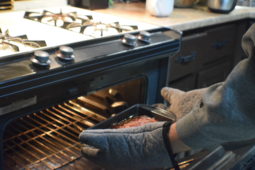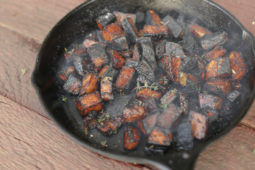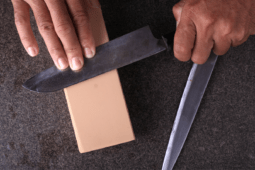How To Open A Can Without A Can Opener in 11 Ways
The easy invention of the pull tab on cans has been around since the 50s, but not all manufacturers use it. Yes, some cans require the method of the old faithful can opener, but there may be a situation when you will find yourself in a pinch without a can opener — so what do you do?
Or, in a worse situation, you pull tab snaps off, leaving your tin can unbudged and now all messed up. We’ve got you covered with these 11 ways you can open a can without the use of a can opener.
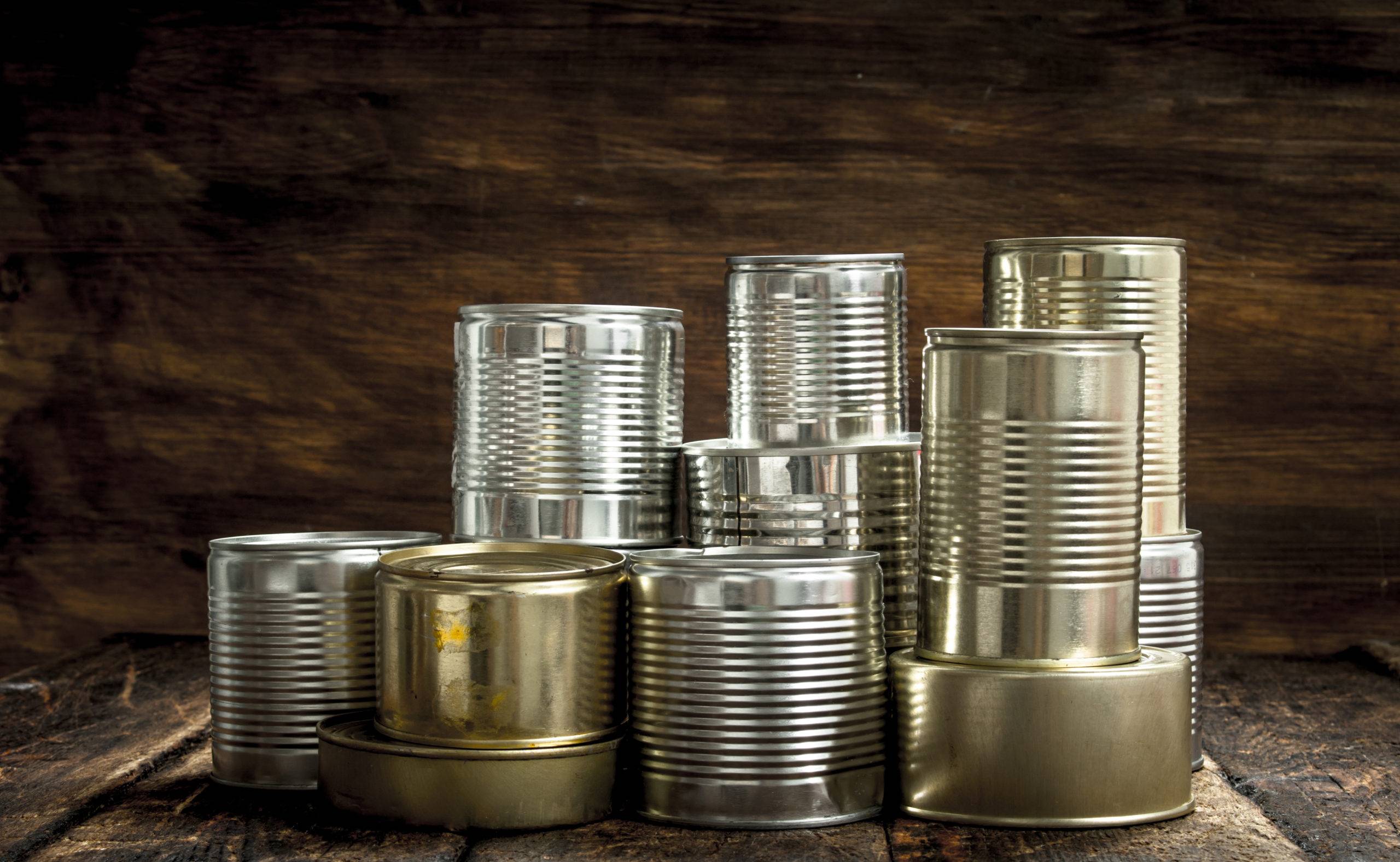
1. A Spoon
Chances are if you are stuck and your can won’t open, or you don’t have a can opener, you’re already in the kitchen and should have a spoon nearby. It seems crazy, but you can, in fact, use a spoon to open a can.
Just make sure that it’s a metal spoon. You will get absolutely nowhere with a plastic spoon.
How to do it:
- Set the can on a flat level surface.
- Grab the spoon firmly and set the spoon’s tip on the lid’s edge on the inside of the rim. Ensure the spoon’s ” bowl ” faces towards the center of the can.
- Keep the tip of the spoon on one spot of the lid, then, pushing down on the lid, rock the spoon in a back-and-forth “sawing” motion — this continual motion should wear down and eventually penetrate the lid of the can.
- After the lid has been punctured, continue the motion until the entire lid has been “sawn” off.
- Pry open the lid by digging the spoon under it but be careful — remember that the edges of the pried lid will still be very sharp.
- Gradually push the lid upwards with the spoon to reveal the contents of the can.
- To remove the lid entirely, use your hands. You will want to ensure that your hands are protected by gloves or by using a towel or rag.
2. Fork
As well as a spoon, a fork can also be used to open a can. However, the method is not quite the same as the spoon and can be a little labor intensive.

How to do it:
- Place your can on a flat even surface.
- Using your hand, push one prong of the fork on the lid’s edge inside of the rim.
- Once you have the prong pierced through the can, change the angle of your fork so that the prong is under the lid and begin to saw and tear away at the lid by moving your fork along the edge.
- Move the fork back and forth to work away at the lid.
- Once you have opened the can a few inches, you can flip the fork around and use the other end to pry up more of the can lid.
- This method will most likely only open the lid halfway.
3. A Chef’s Knife
The handy thing about not being able to open a can is that, as mentioned in the last two methods, you’re going to be in the kitchen — well, typically. At any rate, the fact that you are in the kitchen means you will have a bevy of helpful instruments at your fingertips, and if the spoon method doesn’t seem plausible to you, you can try a chef’s knife.
You’re not going to want to use a chef’s knife in the way that you would typically think to puncture the can. Most times, people dive right in and try to puncture the can with the knife’s sharp point.
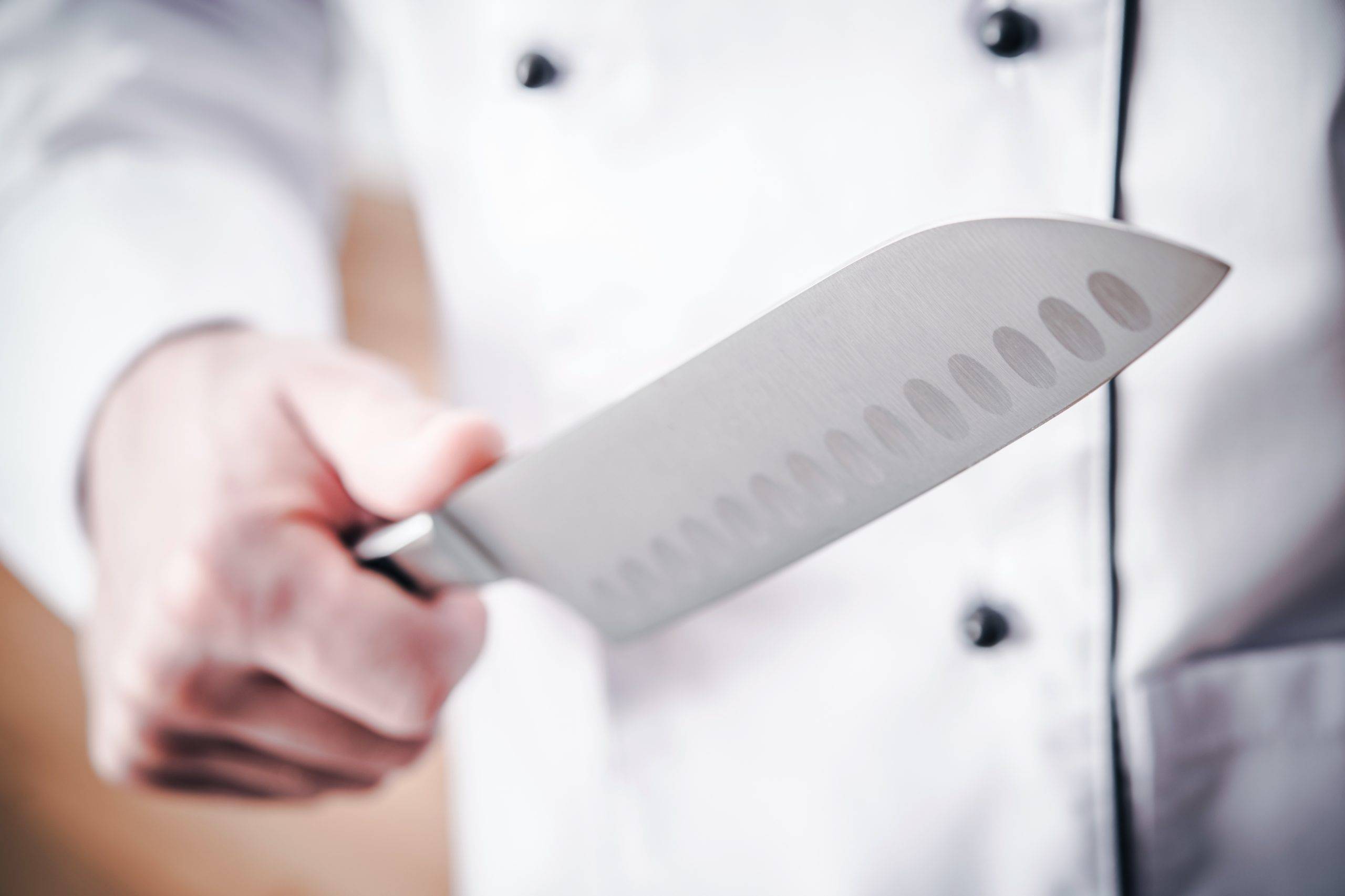
Chef’s knives are fragile and susceptible to breaking, so you don’t want to bear down the point into the can as it will most likely snap. Instead, you will want to use the “heel” of the blade instead.
How to do it:
- Set the can on a level, stable, sturdy surface.
- Important! Don’t attempt this method by placing the can between your legs, on your lap, or while holding the can; the blade could slip, and you risk seriously injuring yourself.
- Hold the Chef’s knife firmly where the handle and the blade meet. Ensure that the blade faces away from you.
- Rest your thumb on the side of the blade to avoid obstructing the “heel” of the blade and risk getting your thumb cut.
- Position the heel of the Chef’s knife on the edge of the can’s lid.
- Make a hole by vigorously and carefully pressing down the can’s lid.
- Repeat the process all around the circumference of the lid. The lid should now be loose and easy to pry off.
- You may be tempted to reverse the blade and cut into the rest of the unopened areas of the lid after you make a few punctures — don’t do this! You could break off the tip of the Chef’s knife, so just stick to using the heel.
- Proceed to pry off the lid after you have punctured all around the can by placing the blade under the lid, then pull upwards to remove the lid safely and reveal the contents.
- Never handle the lid with your bare hands. Be sure to wear protective gloves or use a rag or cloth.
Important! Do not use this method with any other knife; the weight of the blade is vital to the success and safety of performing this method.
4. Pocket Knife
If the Chef’s knife method makes you a little uneasy, you can try a pocket knife. This method is less complicated and may be easier to handle.
How to do it:
- Place the can on a flat, level surface.
- Grasp the knife in a reverse grip. Keep the knife perfectly vertical and place the tip of the blade against the inner edge of the can’s lid.
- Important! Ensure that the knife has a sharp tip. A dull blade can fail to pierce the metal, slip off and injure your hands.
- Using your free hand, carefully but strongly pound the pommel of the knife, palm facing down.
- TIP: If you can’t pound the knife with enough strength, you can use a brick or a rock to pound the knife in, but be careful not to damage the knife or hurt your hand.
- Reposition the knife at the leading edge of the puncture you made and repeat steps 3 and 4 until the edge of the lid has been thoroughly encircled with punctures.
- Your lid will now be loose, and you can carefully pry it off the can.
- Important! Don’t use your fingers to do this; the uneven edges of the can are incredibly sharp. You can use a smaller knife to pry off the lid if you prefer.
5. Pliers
If you have exhausted your tools in the kitchen and want to try a different method, pliers may work for you. You want to make sure that you use Flat-nosed, not long-nosed pliers. These types of pliers work best with this method.
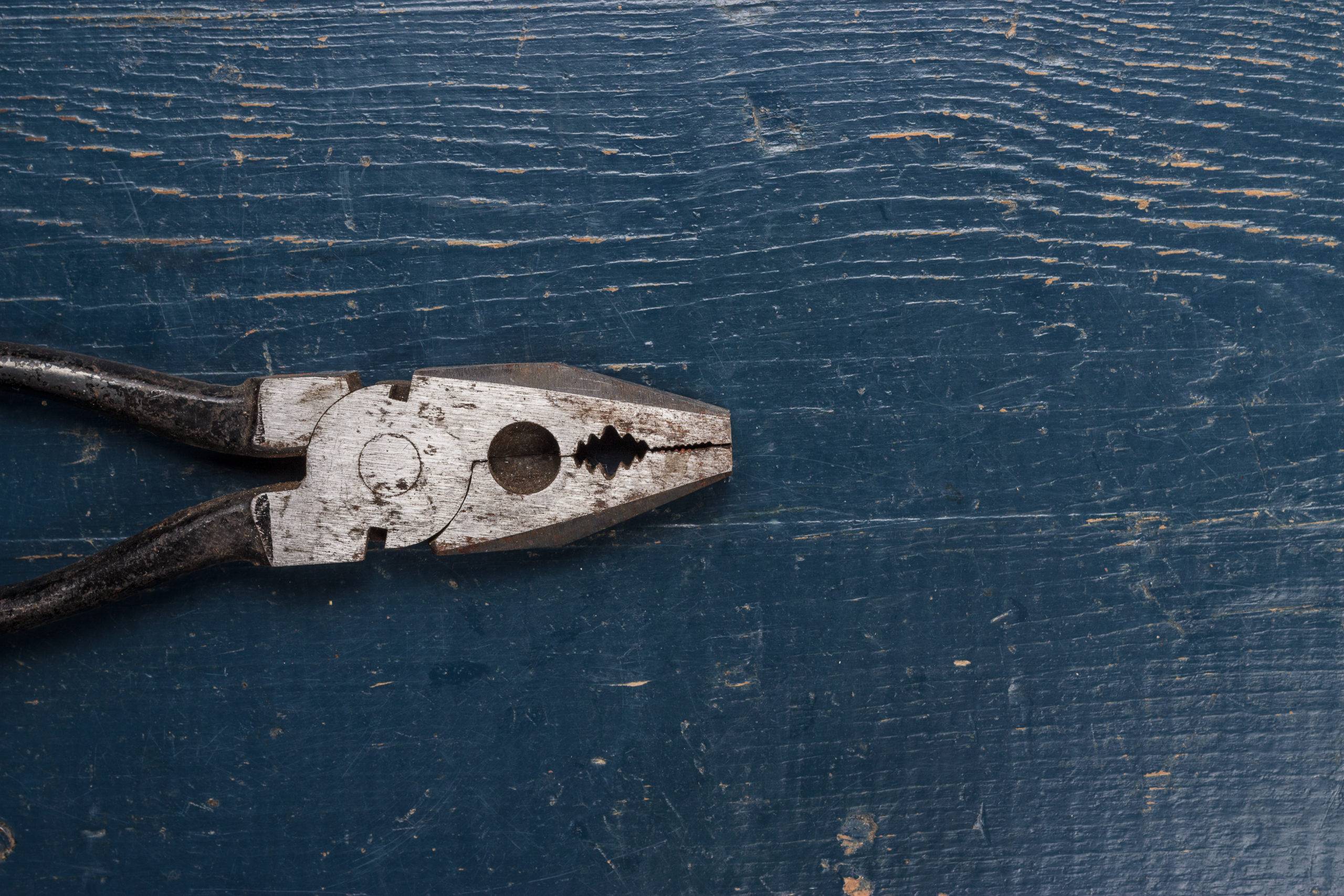
How to do it:
- Place your can on a flat and level surface.
- Grasp the pliers in one hand and come at a portion of the can’s lip, crimping and crushing it carefully but with force.
- Continue crimping and crushing all of the can’s lip. This will weaken the lid’s hold on the can. Once you’ve crimped all around the lid, carefully pry it off.
6. Tin Snips
If you have a set of tin snips in the garage or toolbox, this may be your best bet for opening a can without a can opener. This is probably the cleanest and most straightforward method for opening a can in a pinch.
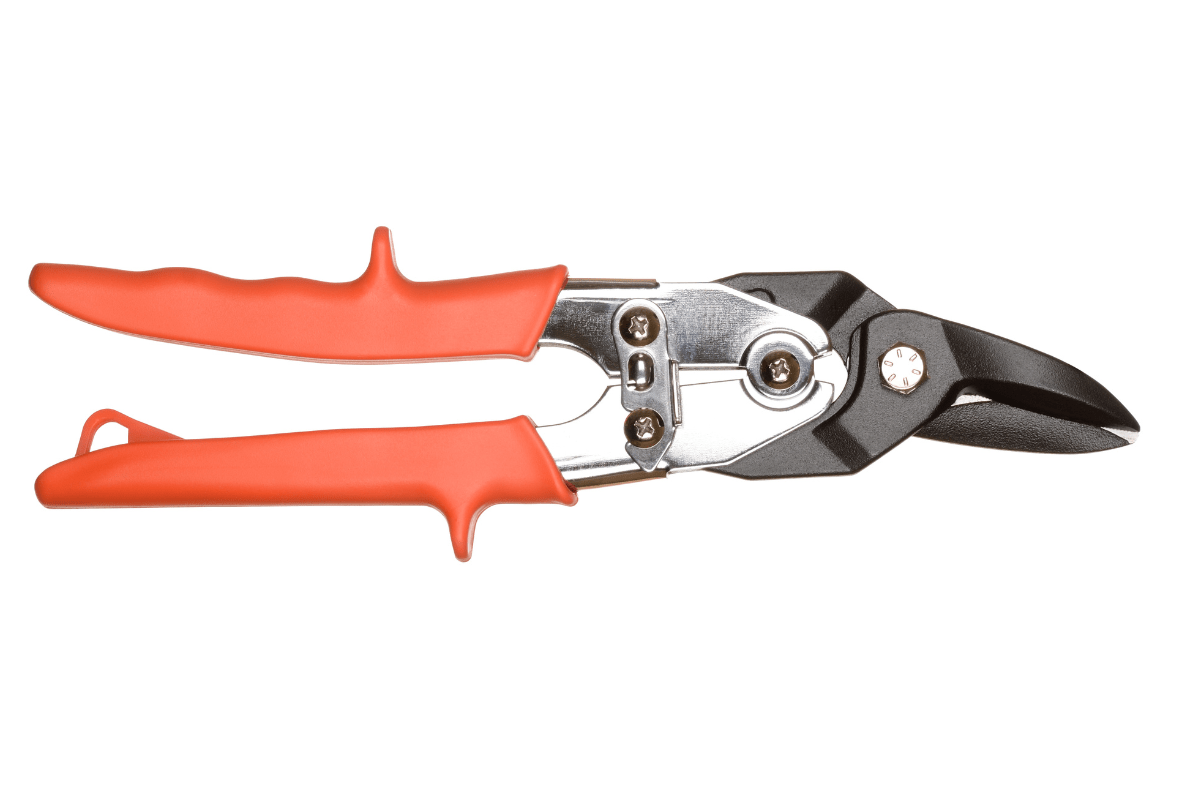
How to do it:
- Place your can on a flat even surface.
- Hold the tin snips firmly and in the usual way.
- Important! Avoid accidental injury by ensuring you are not holding the can in your other hand, on your lap, or between your legs.
- Cut into the lip that runs around the entire can using the tin snips on an angle.
- Rotate the can as you cut and turn slowly and carefully.
- Once you have cut all the way around, carefully pry off and remove the lid.
7. Concrete Pavement
Head outdoors for this one but be careful. You may end up with concrete dust or particles in your food, so I would only attempt this method if you are opening food that can be rinsed off.
How to do it:
- Find a large, flat, coarse surface like concrete pavement. You could also use the wide face of a concrete block or even a large flat rock with a rough surface.
- To break the seal place the can upside down on the concrete pavement.
- Rub the can along the surface, back and forth, while applying even pressure.
- Keep rubbing back and forth until you see moisture on the pavement.
- You can flip the can over to see how much of the lid is wearing away.
- Once you see moisture, you should stop as you risk spilling your food or contamination.
- Stop rubbing, and you will see that the lid has become relatively thin, and you should be able to use a butter knife to pry it off.
- In some cases, the lid will become so thin that you may even be able to pry it off with your hands but be sure to be careful if you are using bare hands so as not to injure yourself.
8. Construction File
If you are in the garage or have a toolbox handy, you can follow the same steps above but use a construction-grade file instead. It works in the same way, except you will keep the can upright rather than tipping it over.
9. An Axe
An axe can chop wood, so surely it can open a tin can! This is great for if you’re camping and forgot your can opener but happen to have an axe and is a handy method to know in emergency type situations.
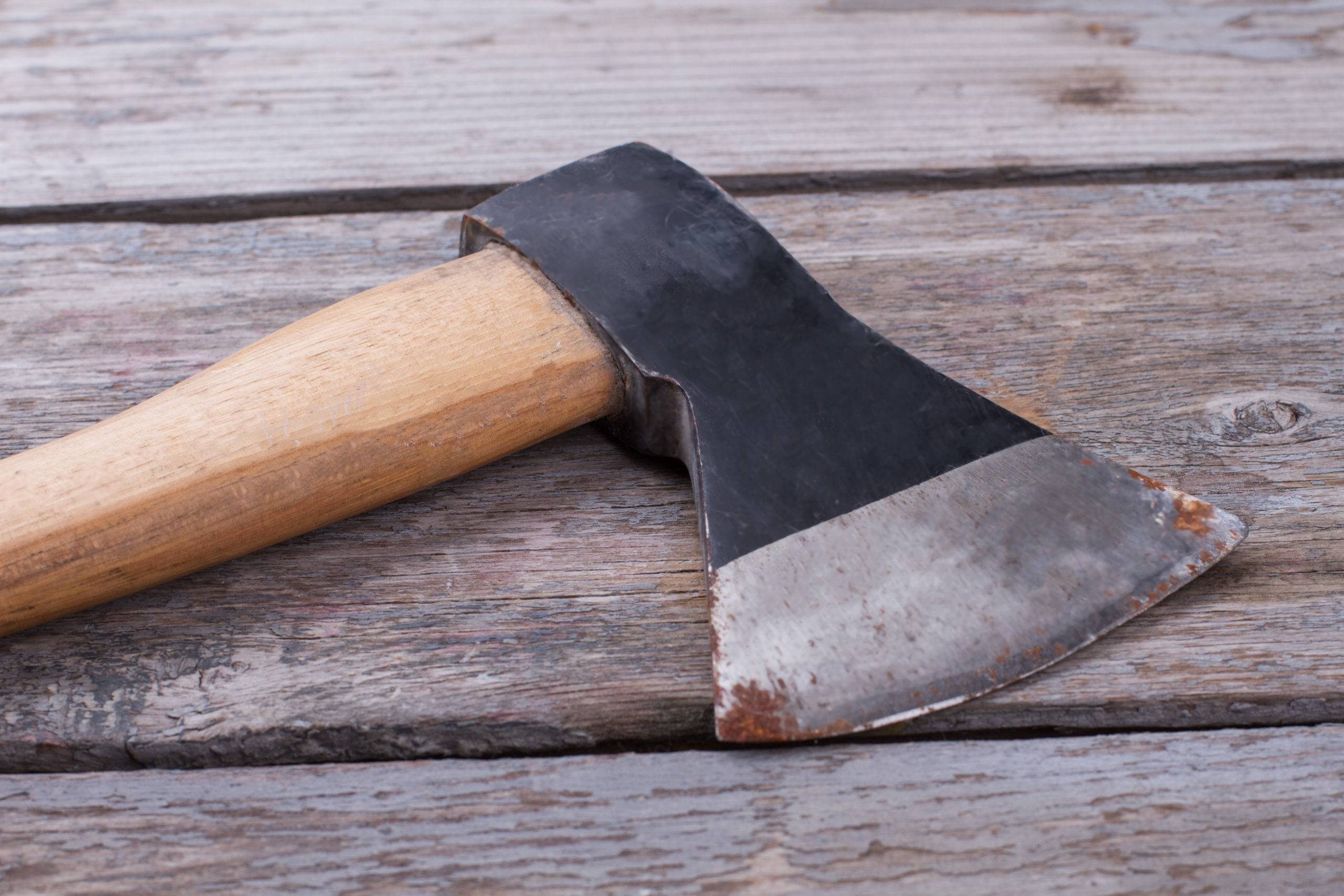
If you use this method and you can, ensure you thoroughly clean your axe before opening your can.
How to do it:
- Hold the can on its side upon a flat, even surface.
- While grasping the axe by its shaft right under the base of the blade, carefully cut into the can just under the lid.
- Use a slow but constant raking movement and continue to slice through the can.
- You can stop about 75 percent of the way into the circumference of the can, then use the axe to pry the lid upwards.
10. A Pair of Scissors
A pair of scissors is a handy tool to use to open a can in the case of not having a can opener.
How to do it:
- Place your can on a flat even surface.
- Keep the blades of your scissors closed, and then place them point-down on top of a can next to the lip of the tin.
- Important! Ensure one hand holds onto the scissors’ handle so they can’t slip.
- Use the palm of your other hand and tap the scissors to pierce the can.
- Once the can is pierced, use the scissors to cut around the inner rim of the lid of the can.
- Carefully remove the lid of the can.
11. Your Hands
When it comes to this method, this may want to be your last and final resort as it takes a lot of strength. It’s incredibly messy, and it’s also on the dangerous side, but it can be done.
How to do it:
- Begin by unleashing your inner caveman.
- Hold the can in between your two hands horizontally.
- Dent the sidewall of the can – one significant dent on each side.
- Work the two ends back and forth until they can split in two.
This technique can work on both large and small cans – although the larger and taller the can, the easier it will be.
Important! Be very careful with this method as you start to separate the can in the middle; these edges will be extremely sharp!
Frequently Asked Questions (FAQs)
Is it safe to open a can with a knife?
You can most certainly use a knife to open a can, as we mentioned above, but you want to be extra careful where you hold the knife. Since once you open the can the edge of the lid will be sharp, as well as the knife you are holding in your hand.
In all the steps above, if you want to take extra caution, you can wear a pair of safety gloves to protect your hands. Chances are, if you are opening a can in an emergency, you will not have safety gloves. The key is to work slowly and steadily.



